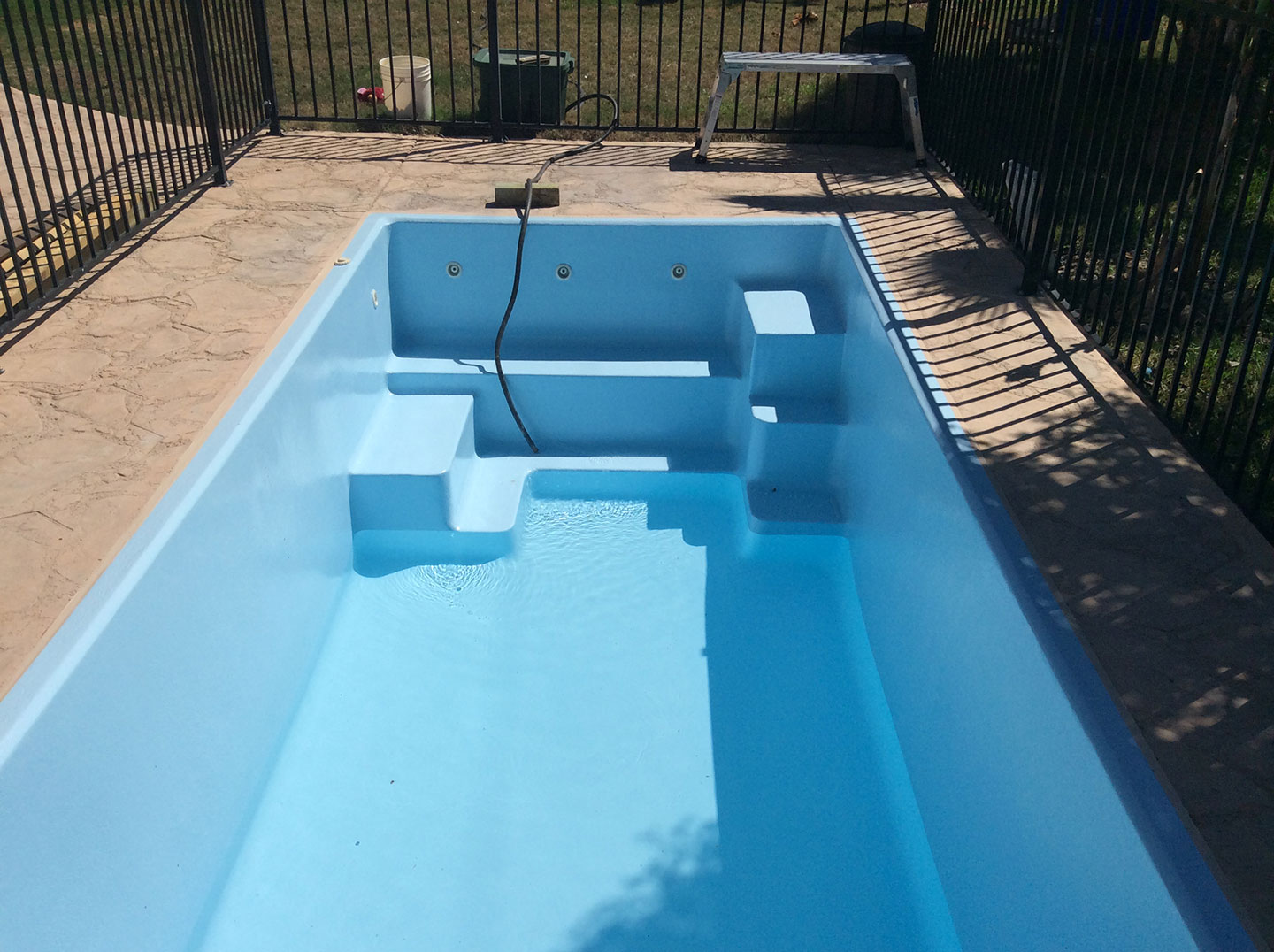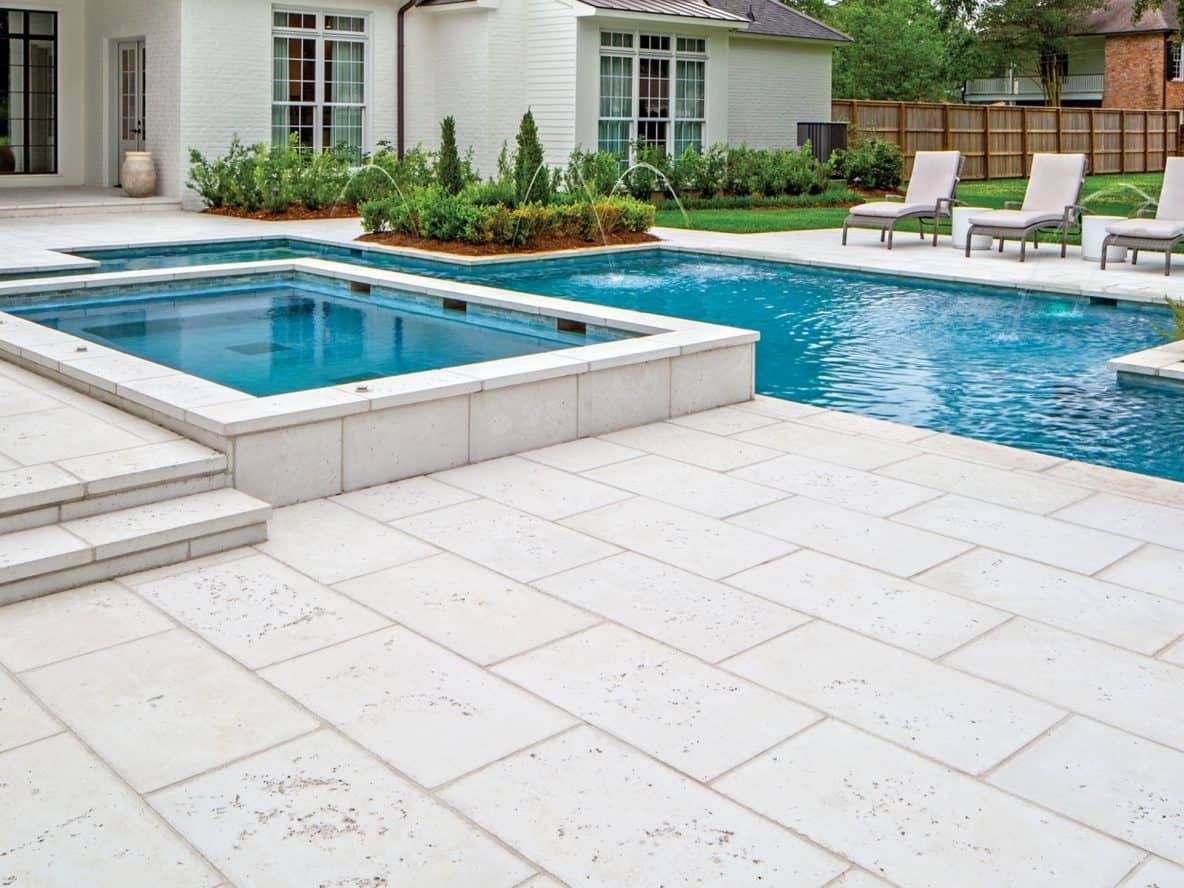Choosing the Right Pool Materials
 Your swimming pool is an investment, and like any investment, you want to make sure you're choosing the right materials for both durability and aesthetics. A well-designed pool not only adds value to your property but also provides a relaxing and enjoyable space for years to come. Selecting the right materials is crucial to achieving this.
Your swimming pool is an investment, and like any investment, you want to make sure you're choosing the right materials for both durability and aesthetics. A well-designed pool not only adds value to your property but also provides a relaxing and enjoyable space for years to come. Selecting the right materials is crucial to achieving this.
Choosing the right pool materials involves considering various factors, from the structural integrity of the pool to its visual appeal. This decision will influence the pool's longevity, maintenance requirements, and overall cost.
Understanding the Importance of Durable Materials
The materials used for your pool should be able to withstand the harsh elements, including constant exposure to water, sunlight, and temperature fluctuations. Durability ensures that your pool remains structurally sound and aesthetically pleasing over time.
Factors to Consider When Choosing Pool Materials
- Budget: Different materials come with varying price tags. Setting a realistic budget helps you narrow down your options and choose materials that fit your financial constraints.
- Location and Climate: The climate in your region significantly impacts material selection. For example, areas with extreme temperature fluctuations might require materials that are resistant to cracking or expansion.
- Maintenance Requirements: Some materials require more maintenance than others. Consider the time and effort you're willing to invest in upkeep when choosing.
- Aesthetics: The visual appeal of your pool is a key consideration. Materials come in various colors, textures, and finishes, allowing you to create a pool that complements your landscape and personal style.
Pool Shell Materials
Choosing the right pool shell material is a crucial decision that will impact your pool's longevity, aesthetics, and maintenance needs. Each material offers unique advantages and disadvantages, making it essential to weigh your priorities and budget carefully.
Durability of Pool Shell Materials
The durability of a pool shell material refers to its resistance to cracking, fading, and damage from chemicals, weather, and wear and tear.
- Concrete: Known for its exceptional durability, concrete pools are highly resistant to cracking and fading. They can withstand harsh weather conditions and heavy use, making them a long-lasting investment. Concrete's strength and resilience allow for various shapes and sizes, accommodating intricate designs and unique features.
- Fiberglass: Fiberglass pools offer good durability, though they are less resistant to cracking than concrete. Their smooth, non-porous surface prevents algae growth and makes them easier to clean. Fiberglass pools are typically less prone to fading than vinyl liner pools but may show signs of wear over time, particularly in areas with high foot traffic.
- Vinyl Liner: Vinyl liner pools provide the least durability compared to concrete and fiberglass. While they are relatively affordable, the liner itself needs replacement every 8-12 years, depending on usage and maintenance. The liner is susceptible to punctures and tears, especially from sharp objects or excessive wear and tear.
Aesthetic Options for Pool Shell Materials
The aesthetic appeal of your pool is influenced by the material chosen, as each offers unique possibilities for color, texture, and finish.
- Concrete: Concrete offers the most versatility in terms of aesthetics. You can achieve various finishes, including smooth, textured, and even patterned surfaces. Concrete pools can be customized with mosaics, tiles, and decorative features, allowing for unique and personalized designs.
- Fiberglass: Fiberglass pools typically come in a limited range of colors and textures, often featuring a smooth, gel-coated finish. However, advancements in technology have expanded the color palette and introduced textured finishes, offering greater design flexibility.
- Vinyl Liner: Vinyl liner pools provide the most affordable and readily available aesthetic options. Liners come in a wide variety of colors and patterns, from traditional blue to more contemporary designs. You can choose a liner that complements your pool deck and landscaping.
Comparison of Pool Shell Materials
| Material | Durability | Aesthetics | Cost | Maintenance |
|---|---|---|---|---|
| Concrete | High | Highly customizable | High | Moderate |
| Fiberglass | Moderate | Limited options, but expanding | Moderate | Low |
| Vinyl Liner | Low | Wide variety of colors and patterns | Low | High |
Pool Surrounds and Coping

The pool surround and coping are crucial elements that not only enhance the visual appeal of your pool but also play a vital role in protecting the pool structure from damage. The surround is the area surrounding the pool, while the coping is the edge of the pool deck that transitions into the pool. These elements act as a barrier against erosion, weathering, and other environmental factors, ensuring the longevity of your investment.
Materials for Pool Surrounds and Coping
Choosing the right materials for your pool surrounds and coping is essential for both aesthetics and durability. Different materials offer unique advantages and disadvantages, influencing the overall look, maintenance requirements, and lifespan of your pool.
- Pavers: Pavers are versatile and aesthetically pleasing, offering a wide range of colors, patterns, and textures. They are durable and can withstand heavy foot traffic, making them ideal for pool surrounds. However, they require regular cleaning and sealing to prevent staining and erosion.
- Stone: Natural stone, such as granite, limestone, and travertine, provides a luxurious and timeless look. It is highly durable and resistant to weathering, requiring minimal maintenance. However, stone can be expensive and may require professional installation.
- Tile: Ceramic and porcelain tiles offer a vast array of colors, designs, and finishes, allowing for creative customization. They are relatively inexpensive and easy to maintain, but they may require regrouting over time.
- Concrete: Concrete is a durable and cost-effective option for pool surrounds and coping. It can be molded into various shapes and designs, offering flexibility in customization. However, concrete requires regular sealing to prevent cracking and staining.
Comparison of Pool Surround and Coping Materials
| Material | Durability | Aesthetics | Maintenance | Cost |
|---|---|---|---|---|
| Pavers | High | Versatile | Moderate | Moderate |
| Stone | Very High | Luxurious | Low | High |
| Tile | Moderate | Versatile | Low | Low |
| Concrete | High | Customizable | Moderate | Low |
Pool Equipment and Accessories

Just as you've carefully chosen the materials for your pool shell and surrounds, the equipment and accessories you select play a crucial role in both the functionality and aesthetic appeal of your swimming haven. Choosing the right equipment and accessories is about achieving a harmonious balance between performance and style, ensuring your pool is not only a refreshing oasis but also a visually stunning centerpiece.
Pump Selection: Balancing Power and Aesthetics, Choosing the right pool materials for durability and aesthetics
The pump is the heart of your pool's filtration system, circulating water and ensuring cleanliness. While performance is paramount, you can also find pumps that blend seamlessly with your pool's design.
- Submersible pumps, often housed in a discreet equipment enclosure, offer a streamlined look and minimize visual impact.
- Above-ground pumps, though more visible, can be selected in muted colors or with textured finishes to match the surrounding landscape.
When selecting a pump, consider its energy efficiency and noise level, as these factors contribute to both your pool's performance and your enjoyment.
Pool Landscaping and Water Features
Your pool is more than just a place to cool off on a hot day; it's an extension of your home, a space for relaxation and entertainment. Landscaping and water features can elevate your pool area from ordinary to extraordinary, creating a serene oasis that complements your pool's design and materials.
Landscaping Options
Landscaping plays a crucial role in defining the overall aesthetic of your pool area. Strategic plant selection, tree placement, and hardscaping can transform your poolside into a tranquil retreat.
- Plants: Choosing the right plants for your pool area is essential. Consider factors like sunlight exposure, soil type, and water requirements. Tropical plants like palm trees and hibiscus create a lush, resort-like atmosphere. Low-maintenance options like succulents and drought-tolerant grasses are ideal for arid climates.
- Trees: Trees provide shade and privacy, enhancing the comfort and ambiance of your pool area. Choose trees that are well-suited to your climate and soil conditions. Deciduous trees offer shade in the summer and allow sunlight to reach the pool during the winter. Evergreen trees provide year-round privacy and visual interest.
- Hardscaping: Hardscaping elements like patios, walkways, and retaining walls define the space and provide functionality. Natural stone, pavers, and concrete offer durability and aesthetic appeal. Consider incorporating features like fire pits, outdoor kitchens, and seating areas to enhance the overall experience.
Incorporating Water Features
Water features add a touch of magic and tranquility to any pool area. The sound of cascading water is soothing and creates a calming atmosphere.
- Waterfalls: Waterfalls create a dramatic focal point and add a sense of movement to the pool area. They can be incorporated into retaining walls, rock formations, or even the pool's edge.
- Fountains: Fountains come in various styles, from simple and elegant to elaborate and whimsical. They can be placed in the center of the pool, on the deck, or in a separate garden area.
- Jets: Jets can be installed in the pool to create a spa-like experience. They can be used to massage the body or simply to create a relaxing current.
Complementing Pool Materials and Design
Landscaping and water features should complement the materials and design of your pool. For example, a contemporary pool with sleek lines and minimalist design might benefit from a clean and modern landscaping approach with geometric shapes and minimal plant life. A traditional pool with ornate features could be enhanced by a lush landscape with flowing curves and cascading waterfalls.
"The goal is to create a cohesive and visually appealing environment that reflects your personal style and enhances the overall enjoyment of your pool."
FAQ: Choosing The Right Pool Materials For Durability And Aesthetics
Choosing the right pool materials for durability and aesthetics - What are the most common pool shell materials?
The most common pool shell materials are concrete, fiberglass, and vinyl liner. Each material offers different advantages and disadvantages in terms of durability, aesthetics, cost, and maintenance.
What are the different types of pool coping?
Pool coping is the edge of the pool that protects the shell and provides a safe and comfortable surface to walk on. Common coping materials include pavers, stone, tile, and concrete.
How do I choose the right pool equipment and accessories?
Choosing pool equipment and accessories that complement the overall pool design is essential. Consider the aesthetic considerations for each item, including color, shape, and material.
What are some landscaping ideas for around a pool?
Landscaping plays a crucial role in creating a visually appealing pool environment. Consider incorporating plants, trees, and hardscaping elements that complement the pool's materials and design.
